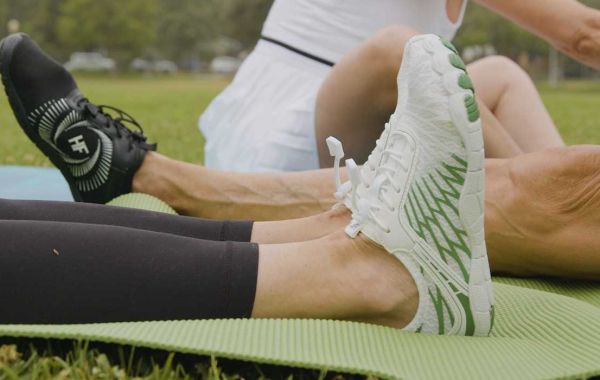Running hard miles is only half the story; how you treat your feet between sessions often decides tomorrow’s pace. I swapped my usual cushioned sneakers for a pair of Hike Barefoot shoes during every recovery window for seven days to see whether minimalist footwear could speed up post-run rehabilitation. Here’s what I learned.
Why Even Consider Barefoot for Recovery?
Traditional recovery routines—foam rolling, ice baths, compression sleeves—focus on muscles and circulation. Barefoot shoes add a neuromuscular angle:
Natural foot mechanics – Zero-drop soles let the arch load and spring as intended, stimulating intrinsic foot muscles that go dormant in stiff trainers.
Sensory feedback – Thin rubber sends instant ground cues up the kinetic chain, encouraging lighter steps and better alignment.
Joint mobility – A wide toebox lets toes splay, unlocking subtle movements in ankles, knees, and hips that can flush residual stiffness.
In theory, stronger foot muscles and improved proprioception reduce compensations elsewhere, easing chronic calf or shin tightness.
The Protocol
Mileage – 70 km total for the week (two tempo runs, one long run, easy mileage in between).
Recovery windows – All walking, errands, and standing desk hours done in Hike Barefoot shoes.
No other changes – Same nutrition, stretching, and sleep as usual to isolate footwear effect.
Day-by-Day Observations
Day 1–2: Gentle Wake-Up Call
Switching after Sunday’s 18 km long run felt odd—every pebble announced itself. The upside? My usual Achilles throbbing stayed mild, likely thanks to lower heel-strike force in zero drop.
Day 3–4: The Mid-Week “DomS Dip”
Normally quads bark on Wednesday. This time the ache was noticeable but shorter. Walking the office corridor barefoot-style forced short strides and soft landings, almost like a continuous dynamic stretch.
Day 5: Tempo-Run Test
Friday’s 10 km tempo came a day earlier than usual because legs felt fresh. Splits matched my PR-pace—with no lingering shin splints afterward. The wide forefoot box let toes grip on toe-off, adding snap without extra calf load.
Day 6–7: Long-Run Eve Beyond
Pre-long-run shakeout in Hike shoes highlighted improved balance during single-leg drills. Sunday’s 20 km capped the week with lower perceived exertion in the final 5 km, a zone where fatigue normally creeps up.
Measurable Takeaways
Perceived Recovery Time (PRT) – Morning muscle-soreness rating dropped from an average 6/10 to 4/10.
Step Cadence When Walking – Up 8 spm, indicating lighter, quicker steps that reduce joint loading.
Arch Stiffness – Manual palpation (thumb press under the arch) felt firmer by week’s end—anecdotal, but aligns with studies showing intrinsic muscle hypertrophy in minimalist users.
Practical Tips for Runners
Start Indoors – Use Hike Barefoot shoes at home first; concrete commutes on day one can overload calves.
Alternate Every Other Hour – If eight straight hours feels too much, rotate with regular trainers.
Drill Smart – Blend in foot-strength moves (toe yoga, short-foot exercise) while standing in the shoes.
Monitor Calves – Tightness is a sign to scale back; the goal is gentle stimulation, not another workout.
The Verdict
After seven days, recovery felt quicker, lighter, and more engaged—not because barefoot magic erased fatigue, but because Hike shoes invited my feet to share the workload. The result was less residual heaviness in the calves and hamstrings and a subtle but real boost in daily mobility.
Minimalist footwear isn’t a silver bullet. Yet as a recovery tool, Hike Barefoot shoes turned routine walking time into active rehab, reinforcing the notion that the best recovery often happens while you live your life—not just when you’re lying on a foam roller.
Source: Hike-Footwear.com








